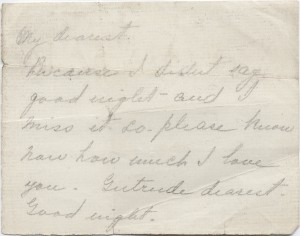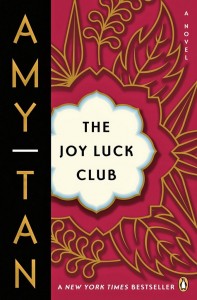
from Gertrude Stein to Alice B. Toklas
To give some fun illumination to tonight’s reading, I will spend this post pouring over Phoebe Stein Davis’s 1999 article “Subjectivity and the Aesthetics of National Identity in Gertrude Stein’s The Autobiography of Alice B. Toklas.”1
Davis notes Stein’s active choice to situate The Autobiography within a genre that has traditionally been identified with cis male voices and masculinized “mastery of narrative control” (19). (Of course, in this class, I’m sure we’ll have lively conversations about whether The Autobiography can be considered as such: does simply calling something an autobiography thus make it one? What does the ‘auto’ in ‘autobiography’ mean if the author is not the person the text is about? Or is this text more about Gertrude than about Alice anyway, and perhaps the genre fits but the title does not? Can a couple’s biography written by one party in the voice of another be considered ‘autobiography’? These are lots of fun questions, but ultimately, I’m not sure that I’m personally too concerned with what we call it so much as how we read it. Then again, let’s be realistic: what we call it has a profound effect on how we read it… Back to the proverbial square one!)
Alright, I’m back from my digression: Stein chose to wrote in a deliberately non-experimental form that had traditionally been dominated by “Great” White Cis Men. Yet, writing in her lover’s voice, I would posit that Stein carried some of her experimentalism over into the auto/biographical form. Similar arguments have been taken up by many feminist critics, according to Davis, who cites many feminist critiques that highlight “Stein’s displacement of the autobiographical ‘I’ onto the lesbian couple demonstrates that The Autobiography presents a distinctly feminist notion of identity that, with its resistance to the idea of a unified, coherent self, anticipates postmodern notions of subjectivity” (19). (This seems to me to be a highly academic way of giving a shout out to The L Word’s “lesbian urge to merge”: for all its horrific racism, transphobia, biphobia, ableism, body-negativity and classism [need I go on?], The L Word does sometimes come out [pun intended] with great one-liners.)
I like the idea of resisting unified visions of self – I prefer messiness in identities, myself – which lends itself nicely to Davis’s arguments regarding Stein’s (inconsistent) resistance to coherent national identities. Yet, I would be remiss if I didn’t point out the bristling that I’m sure many feminists feel upon reading a work written by one person in the autobiographical voice of a non-fictitious (and feminine) someone else: is this giving the subject voice, or taking away their agency to express their own selves? Or perhaps it’s not so clear cut: can it be transforming what ‘self’ itself means? Or doing a mix of all of the above at the same time? Does Stein’s revelation at the end of the book that she has been writing in Toklas’s voice take away the ‘bristling’ factor? How much difference does transparency make to our understanding of the text, especially if that transparency comes into play at such a temporally late but structurally prominent place (the very last paragraph of the book)?
Davis, as referenced above, framed her discussions of feminist and lesbian subjectivity as a precursor to her arguments about Stein’s national identity politics. Bemoaning the ways that scholars tend to focus on Stein’s aesthetically experimental writing rather than on the content of The Autobiography as an experimental text that unsettles national identity, Davis argues, “[w]hile it is clear that Stein invokes an essentialist view of nationality, her repeated destabilization of the essentialist view of national identities demonstrates that The Autobiography, as a popular book, remains dedicated to decentralizing and destabilizing the terms we use to define our identities” (18). In The Autobiography, while Stein does make essentialist statements about national identity, she also explains that “where one is from need not determine one’s national identity” (22). Davis argues that Stein’s book claims national identity as an unstable, constructed, and mobile characteristic. This may not appear to be the case, of course, as Stein discusses or refers to national identity on every page of the book. However, upon closer examination, Davis asserts that Stein’s positioning of national identities alongside the gaps in what she and Toklas do not remember suggests that narratives of national identity are called upon “in place of what we do not remember, and in place of the continuity we cannot grasp” (23). Stein’s constant offering up of multiple versions of various stories – granting no versions narrative supremacy – establishes a destabilization of constant truth that, Davis argues, leaks into her accounts of fluid (yet also defining) national identity.
I do understand where Davis is coming from regarding the fluidity Stein assigns to national identity. Davis highlights, for example, that when Stein relates her poring over U.S. Civil War pictures with Picasso, she says that he “became very spanish” (16). This surely suggests a context-based arousal of national identities, and suggests also that national identities come in degrees, as when Stein is described as “completely and entirely american”, as opposed to simply, ‘american’ (forgive me, I can’t find where in the text this was). I do not know that I am convinced that Stein succeeds in transgressing essentialist national identities, because – as Davis herself points out – Stein deploys these essentialist categorizations so often, but I am intrigued by the examples (referenced above) that draw out context and degree of identity. I am also intrigued by Davis’s closing argument that Stein deliberately deployed a “distinctly American aesthetic” for The Autobiography, and this demonstrates an understanding of national identity as a narrative choice (39). These kinds of ideas surely destabilize what we generally think of as ‘fixed, constant’ identities, whether those identities are sexual, gender, national, or ability-based. Different identities emerge in different contexts, and to different degrees. I love that Stein highlights this glorious messiness, even if only in a limited way.
A final contemplation on identity, The Autobiography, and today’s date: what does autobiography mean in masquerade? What does identity mean on Halloween? To what extent is The Autobiography of Alice B. Toklas an autobiography of Gertrude in masquerade as an autobiography of Alice? Can autobiography ever be anything except masquerade? And is that such a bad thing, after all?
—————————————————————————————————
1 Davis, Phoebe Stein. “Subjectivity and the Aesthetics of National Identity in Gertrude Stein’s The Autobiography of Alice B. Toklas.” Twentieth Century Literature 45.1 (1999): 18-45.





